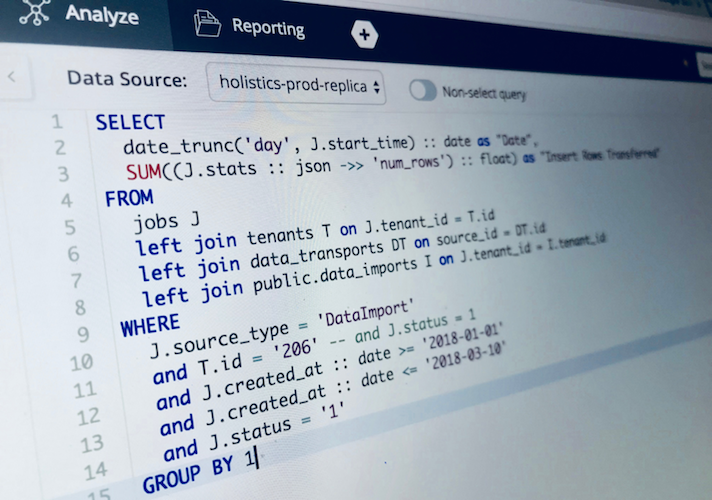How to Become a Data Analyst Without Any Experience
Are you a numbers person who is interested in data analysis?
Do you want to start working with data but don't know where to begin? Do you
want to break into the field as a data analyst without having any formal
training? If so, this article is for you! We'll cover how to become a data
analyst with no experience or formal education in the subject. In it we'll
cover some basic background knowledge of what data analysis is, how it differs
from statistics and mathematics (and why they aren't the same thing), why it's
an exciting field right now—and what kind of jobs are available if you decide
to pursue this career path.
In this guide, I'll show you how to become a data analyst.
We'll go over what exactly a data analyst does, the skills and qualifications
required for this role, and most importantly: how to get started.
- What is a Data Analyst?*
A
data analyst is someone who gathers data from various sources and uses it to
draw conclusions about the business or organization they work for. A good
example would be analyzing sales numbers from different stores over time in
order to determine which locations need more product displays or advertising
campaigns to increase sales. The person in this position has some experience
working with databases but doesn't necessarily have any formal training; they
may even have been promoted into their current job after proving themselves
through trial-and-error learning on their own time.
If
you're thinking about starting out as a professional data analyst without
having any formal training or experience yet under your belt...keep reading!
Be
comfortable with numbers.
You
will be working with data, and you need to be able to interpret the numbers.
You need to know what the numbers mean, and be comfortable explaining them.
This
is a very important skill to have, and it's something that you can't just learn
overnight! It takes practice to become comfortable with numbers and be able to
interpret them.
If
you are new to data analysis, start by reading about statistics. Read books on
how statistics work. Research topics such as probability distributions,
standard deviations, confidence intervals, etc.
Data
analysts are often called upon in meetings where decisions about how much money
should be spent or what direction a business should go in may be made based on
their findings. When this happens, you’re going to want your boss (or whoever
is making those decisions) to trust that they can understand what you say
without having any background knowledge of statistics or any other related
fields.
Learn
at least one programming language.
You'll
want to learn at least one programming language. Knowing how to code is a
critical skill for any data analyst, and you should pick up at least one of
these languages: Python, R, SQL or Java. (C++ is also a good option.)
You
don't have to be a programmer, but it helps if you at least know the basics. If
you want to get into data analysis and don't know how to code, start with
Python. It's one of the easiest languages to pick up on your own since there
are tons of resources online that can help you learn faster than any other
language.
While
there are many different types of coding, it's important that you feel
comfortable with whichever language you choose. This will make it easier for
you to work with other data analysts who use different coding programs as well
as software developers who specialize in coding particular applications such as
marketing software tools or machine learning tools like TensorFlow or Keras.
If
this all sounds overwhelming right now, don't worry! You can start by searching
online courses on Lynda.com or Udemy (or even YouTube).
Understand
databases and how to query them.
It's
important to understand databases and how they work before you can become a
data analyst. You'll need to know the basics of SQL, which is a specialized
language used to query databases. SQL stands for Structured Query Language, and
it consists of commands and clauses that let you retrieve, insert, update, and
delete data from a database.
There
are two types of databases: relational databases (RDBMS) and non-relational
ones (NoSQL). Relational DBs store information in tables with rows representing
records or data points and columns representing attributes of these records.
They're organized into tables with columns that correspond to specific
attributes (such as "name"), rows corresponding to different
instances/records ("John Smith" might be one row in the table), and
relationships between those instances/records determined by how the columns are
related in terms of the values stored within them—for example if two instances
have similar values for their first names then they may belong together as
siblings).
Know
about data visualization tools like Tableau, Power BI, etc.
A
good data visualization tool is essential for creating dashboards. If you don't
have any experience with data visualization, I highly recommend learning one of
these platforms: Tableau or Power BI. Both are excellent tools that can be used
by beginners as well as experienced professionals. The biggest advantage they
offer is their ability to create dashboards relatively quickly and easily
without having to write code or work in Excel (which isn't really a great tool
for visualizing data).
The
best way to learn how to use these tools is by taking a course. I highly
recommend the Tableau 10 Essential Training course from DataCamp. It's a great
place to start if you're new to data visualization.
What
is the cost? The cost for a data science course will vary depending on what you
choose. It's important to keep in mind that most courses are self-paced and can
be completed over the course of several weeks or months. The more advanced
courses may require more time and effort, but they're also likely to offer
better materials and more support than introductory courses do.
Practice
Data Analysis with real world datasets.
Why
you should practice? Practicing data analysis is a great way to learn more
about the field and build up your skills. You can find plenty of datasets on
Kaggle, DataCamp, and other platforms that let you try out what you've learned
and put it into practice.
In
order to become a data analyst, you'll need to acquire the skills and knowledge
required for the job. However, it's not enough to just learn how to do a
specific task or skill; you also have to practice it as well.
Practicing
data analysis is just as important as gaining theoretical knowledge in school.
Just like learning how to write sentences or multiply numbers by hand isn't
enough for you to become fluent in English or mathematics (respectively),
knowing what different types of queries are used for won't be enough if you
don't practice using them on real datasets.
Furthermore,
practicing data analysis will help you develop your own style of doing it,
which may differ from those who taught you how-to previously.
You
can also try practice using tools like RStudio, which allow you to practice
data analysis without having to worry about syntax or coding errors.
In
addition to having a solid theoretical understanding of data analysis, it's
also important to practice using the tools that you'll use in order to perform
your analysis. The more you practice using these tools, the more comfortable
you'll become with them and the faster your analysis will run.
If
you can learn to use quantitative data, you can get a job in data analysis
If
you want to start a career in data analysis, it's important to know that the
job market is strong. Data analysts are paid well and can work from home or at
an office, for large companies or small ones. Data analysts have many options
when it comes to choosing an industry and employer. If you're looking for a way
into the field, there are plenty of opportunities available.
And
what about the salary? According to Glassdoor, the average US salary for a data
analyst is $71,000 per year. These professionals make more than $100,000 in San
Jose, California; Austin, Texas; and Washington D.C.
Conclusion
In
summary, there are many reasons why you should consider becoming a data
analyst. The field is growing rapidly, and there are thousands of opportunities
available. You can work from home or in an office, for large companies or small
ones. And if you're looking for a way into the field, there are plenty of
options available.
What’s
most important is that you keep learning and practicing. This is a rapidly
changing field, with new tools and techniques appearing all the time. You can
never be too prepared for the future of data analysis, so stay on top of what’s
going on in your industry by subscribing to relevant newsletters or following
influential people on Twitter. When it comes down to it though, the best way to
learn how to become a data analyst is by doing!


